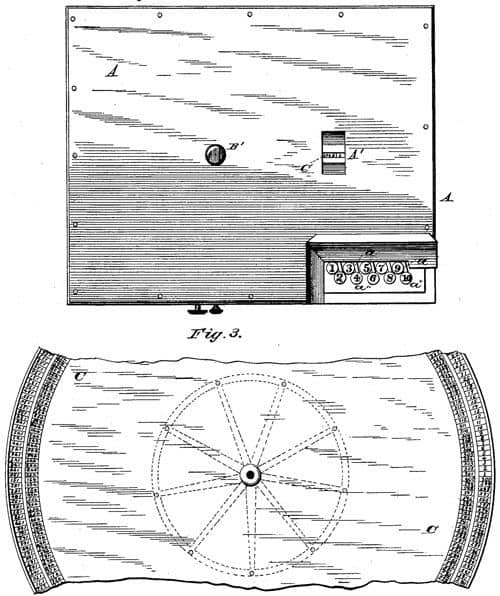During the age of invention, some ideas were simply too big and too great to be contained by one mind. As such, there are several notable inventor duos throughout the history of the computer. One such pairing is that of Mary E. Winter and Cushman W. Crary, a pair of Illinoisans whose work in the field of mathematics helped to inspire both the computer and the calculator in one.
Who Were Winter and Crary?
Mary E. Winter and Cushman W. Crary, referred to here as Winter and Crary, were two Illinois residents who came together to collaborate on an early version of the calculator and the keyboard that we know and depend on in our modern world. Back in the late 1800s, when Winter and Crary patented their invention, Winter was just one of only an incredibly minuscule number of female inventors. This fact just makes their mechanical calculator invention that much more significant.
Quick Facts
- Full Name
- Mary E. Winter and Cushman W. Crary
- Net Worth
- N/A
- Children
- Winter: Two Crary: Three
- Nationality
- Winter: American Crary: American
- Place of Birth
- Winter: Galesburg, IL Crary: Potsdam, NY
- Fields of Expertise
- [“Mathematics”,”Inventor”]
- Contributions
- Keyboard adding machine
Early Life
Not much at all is known about Mary E. Winter outside of her association with Crary and their patented invention, but there is some information out there about Cushman W. Crary and his life before his one-off collaboration with Winter. Even then, the information is not exactly extensive. Cushman W. Crary was born on August 12th, 1822, in Potsdam, St. Lawrence County, New York. He was the son of Elias Crary and Abigail Walker of Vermont. Beyond this, there is no other readily available information about either Winter or Crary’s life before their patent.
What Did Winter and Crary Invent?
Beyond their work as a pair, Winter and Crary were still individuals with their own respective lives and careers apart from their lone joint venture. First, let’s discuss their keyboard-adding machine, then move on to the things Crary did on his own.

The Keyboard Adding Machine
Mary E. Winter and Cushman W. Crary are responsible for jointly patenting a keyboard-adding machine in May of 1882. Not only was it one of the first mechanical calculators to be patented in the world, but it was also one of the earliest machines to be patented by a woman in the United States.
Here’s how it worked: Any given number would be displayed through a single slot on the machine. When the user hits a number on the keyboard, a wheel inside the machine would then rotate to correspond with that number and show the new total. For example, if the number five was displayed and the number four was keyed in, then the wheel would rotate to display the number nine. The hidden wheel was capable of displaying numbers up to 300, at which point an inner wheel would begin displaying numbers 301 through 600.
The keyboard had ten keys, one through 10. Each key was T-shaped, and each was hinged or pivoted at one end of their heads to the arms that moved the ratchet wheel. There are two sets of arms for each of the two wheels, one set to move the inner wheel and one set to move the outer.
Presumably, this device was never manufactured and existed only on paper.
Crary’s Solo Inventions
Beyond his work with Mary E. Winter, Cushman W. Crary had a few patents of his own that came after the invention of their mechanical calculator: A gear cutter, patented in 1883, a workpiece chuck, patented in 1884, and an electric arc light, patented in 1886.
Winter and Crary: Marriage, Children, and Personal Life
Marriage
Mary E. Winter married a Massachusetts architect named Asaph Newton Carpenter in 1853 and moved to Illinois in 1854. Crary, on the other hand, has a couple of recorded marriages: One to Hannah Rowena Nichols on July 3rd, 1846, and one to Caroline Cass following Nichols’s death in 1875.
Children
Winter and her husband Asaph had two daughters after moving to Illinois. Crary is on record for having three children with his first wife Hannah.
Tragedy
It seems the greatest tragedy in Winter’s life is that there simply isn’t much else to be known about her outside of her invention with Crary and that the history books are robbed of significant biographical information about a trailblazing woman inventor who helped carve the way for future females in the field.
In Crary’s life, the greatest tragedy was the death of his first wife after nearly 30 years of marriage.
Winter and Crary’s Contemporaries
As mentioned above, the “calculator and keyboard” patented by Winter and Crary was likely Winter’s only invention, while Crary filed patents for other devices. As an inventor, he was in good company. The late 1800s were a period of rapid technological change. Some notable inventions during that time period were:
- George Westinghouse invented airbrakes in 1868, which enabled engineers to stop a train by pulling a single lever.
- In 1874, the first electric streetcar system was installed in New York City. Designed by Stephen Dudley Field, the system was extremely hazardous and ineffective, but it was a harbinger of how mass transit would come to move people in the future.
- Alexander Graham Bell demonstrated the first telephone in 1876 with the famous first sentence being, “Mr. Watson, come here. I want you.”

